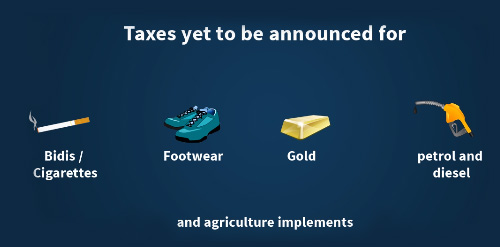The newly-implemented tax reform has taken the nation by storm in the last few days. If social media posts are to go by, GST is the second most misunderstood thing after the Duckworth-Lewis method in cricket. If we look at the trends of various top B-school selection processes, understanding GST becomes of paramount importance since recent major ecomonic decisions tend to show up regularly in the GD/PI process of Bschools. So in this article, we try to simplify GST, so that you are prepared to answer any GST-related questions during GDPIs.
By now, we all have gone through a lot of newspapers articles, regarding GST and yet fail to comprehend its actual meaning. Even though PM Narendra Modi termed it as a “a good & simple tax”, yet he himself quoted Albert Einstein, as the master physicist told his tax-accountant “If there is something in this world that is difficult to understand, it is income tax.” What our respected PM wanted to convey is that the purpose of GST is to do away with a tax-on-tax system that was prevailing before.
So, on a broad level, we now have a comprehensive, destination-based & a more structured tax system as that of foreign countries. You will be surprised to know that 159 countries of the world already have this system in place. Currently, Indian taxation system is composed of two main types of taxes- Direct and Indirect. While direct taxes impose the liability directly on the person, the indirect taxes can be passed on to someone else. GST intends to replace all the indirect taxes (VAT/sales tax, excise duty etc.).
The following illustration explains the difference between old & new system:
(Assume the rate of tax is 10% & there is no profit /loss)
As you can see, in the old taxation regime, the tax burden was passed on at every stage, thus the name ‘Cascading Effect of Taxes’ or ‘tax-on-tax’ system. The value of the item keeps on incrementing at every stage. In the case of Goods and Services Tax, the individual who has paid a tax already can claim credit for tax paid in acquiring input. Eg: Rs. 10 becomes input credit for wholesaler
- GST is implemented in three components:
- CGST (Central GST): The revenue will be collected by the central government.
- SGST (State GST): The revenue will be collected by the state governments for intra-state trade.
- IGST (Integrated/Inter-state GST): The revenue will be collected by the central government for inter-state trade.
- The effect of GST on the prices of goods and services depends on the item in question, the respective State governments and how they control prices of essential commodities. E.g. if the State government offers a subsidy on a product, it may be sold at cheaper rates.
- GST intends to boost exports, investments and make them more competitive. It presents a level-playing field for producers and consumers. Also, it facilitates ease of doing business inter-state as well as intra-state.
- GST is being applied in the following slabs:
- 5%: Economy class travel in airlines, goods transport, tea, edible oils, spices, items of mass consumption etc.
- 12%: Business class travel in airlines, processed food, Non-AC restaurants etc.
- 18%: AC restaurants, Telecom & IT services, financial services, hotels with tariff between Rs. 2500-5000 etc.
- 28%: cinema & entertainment, hotels with tariff above Rs 5000, cars etc.
Almost 80% of items fall below or within 18% GST slab.
GST exempt: healthcare, education, local train & metro, hotels with tariff under Rs. 1000, 50% of basic commodities (eggs, cereals, meat etc.), poultry other than horses etc.

Therefore, GST is set to revolutionize as well as simplify the tax structure.






